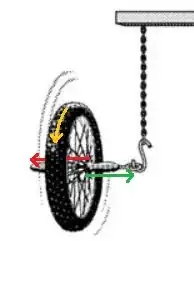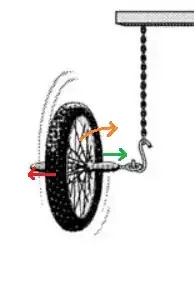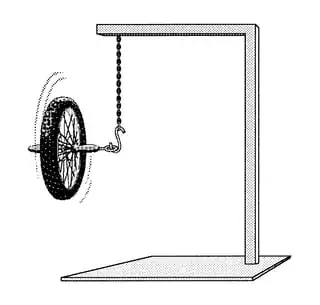This is a good question, because when you search the internet there is not one single formula for the maximum reaction torque of a gyroscope.
The formula generally given for the reaction torque $T_p$ and the angular precession velocity $\omega_p$ of a gyroscope is: $$T_p = \omega_p \ \omega_f \ I$$ and this is equal to external applied torque, where $\omega_f $ and $I$ are the spin velocity and moment of inertia of the gyroscope flywheel respectively. The problem with this formula is that it implies that no matter how large the applied torque is, the gyroscope can match this force with an equal reaction force simply by precessing faster, with no apparent limit given to the precession velocity. In relativity we can say the maximum tangential velocity is the speed of light, but In Newtonian physics it is more difficult to explain and common observation indicates the precession velocity never gets anywhere near the speed of light. Any friction that slows down the precession of a gyroscope reduces its ability to match the applied torque and bearing friction and air friction are some possible limitations to the maximum precession velocity.
However there appears to be something else going on before the air friction becomes a significant factor and it seems reasonable to assume that even in a vacuum a gyroscope cannot match any arbitrary external force, no matter how large.
One thing to take into account is that impulses require a finite amount of time to travel, before they affect a part of an object distant from where the impulse originated. This provides an intuitive view of how gyroscopes work. Using your setup imagine an impulse applied downward on the free end of the gyro axle. This creates a torque couple on the spokes that happen to be vertical at that instant, as depicted by the red and green arrows in the diagram below:

By the time these impulses reach the ends of the vertical spokes the vertical spokes are horizontal and the torque applied to the rim and tyre is now horizontal causing the wheel to precess clockwise as viewed from above as depicted in the diagram below (if the wheel was rotating clockwise viewed from the outside.)

If the wheel is spinning around its own axle too slow, it will not complete the minimum quarter rotation by the time the impulses reached the rim and there will not be the required precession rotation to prevent the wheel falling. This provides a mechanism for why we require a minimum spin speed for the flywheel.
However, the speed at which the impulses travel outwards along the vertical spokes is independent of the size on any non zero impulse applied so this effect cannot explain any limitation on the maximum torque reaction of the gyroscope.
A quick note on the moment of inertia $(I)$ used in the formula at the start. Some texts imply that $I = M_f \times R^2$ where $M_f$ is the mass of the rim of the flywheel and R is the radius of the flywheel. This is not correct because we are not trying to accelerate the spin of the flywheel around it's axle. The correct calculation is to treat the flywheel like a static mass at the middle of a rod and add the moment of inertia of the rod. See "Calculating moments of inertia of various objects".
If the mass of the axle is $M_a = M_f*k$ and has length $2d$ then the moment of inertia is given by: $$I = d^2 M_f (1+4k/3) \ .$$ If the mass of the axle is small compared to the mass of the flywheel, so k is small, this formula can be approximated by $I = d^2 M_f$.
The work done by a torque in a given time, is proportional to the torque multiplied by the angle it turns though. To get a figure for the work done by gravity $(T_g \times \theta_g)$, we have to imagine the angle the flywheel turns through if it is not spinning and does not resist falling. Due to conservation of energy, work in equals work out and we can say:
$T_g \theta_g = T_p \theta_p \ .$
.
Since $T_g = T_p$ it is easy to see that $\theta_g = \theta_p$ and that the angle the flywheel precesses per unit time is equal to the angle it would turn through per unit time as it falls, if the fall is not resisted. In other words it seems the maximum precession velocity and reaction torque is only limited by the maximum maximum angular velocity that could be induced by the external torque if the gyroscope was not spinning.
Earlier I mentioned bearing friction and air friction being a limitation to the reaction torque, but if we imagine a flywheel spinning far out in space, we do not need an axle or bearings and there is no air friction, so in principle we could have a perfect reaction torque that exactly equals any applied torque.
Will increased force here only cause it to precess faster around the
chain?
It seems the short answer is "yes".


